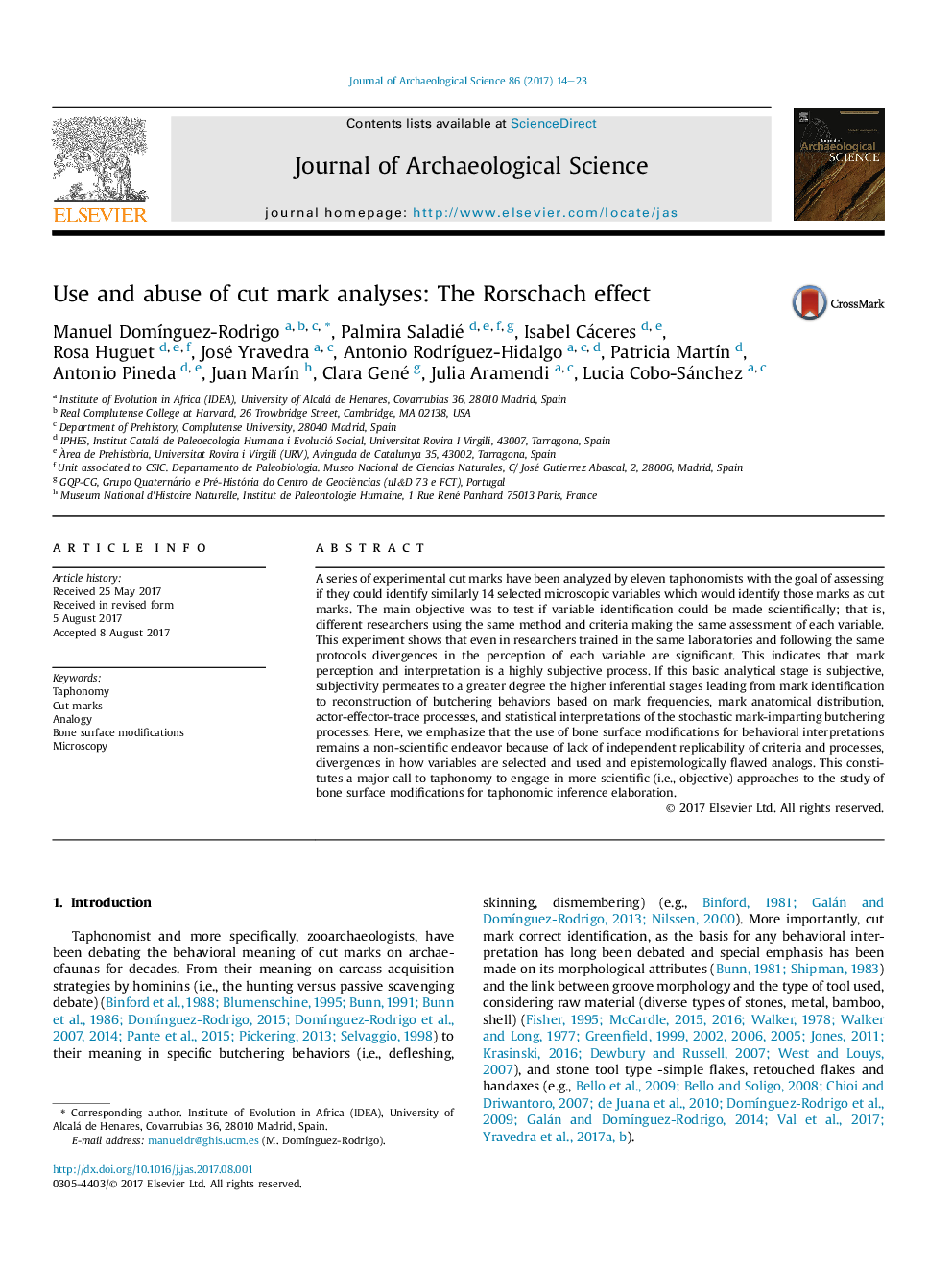| Article ID | Journal | Published Year | Pages | File Type |
|---|---|---|---|---|
| 5111980 | Journal of Archaeological Science | 2017 | 10 Pages |
Abstract
A series of experimental cut marks have been analyzed by eleven taphonomists with the goal of assessing if they could identify similarly 14 selected microscopic variables which would identify those marks as cut marks. The main objective was to test if variable identification could be made scientifically; that is, different researchers using the same method and criteria making the same assessment of each variable. This experiment shows that even in researchers trained in the same laboratories and following the same protocols divergences in the perception of each variable are significant. This indicates that mark perception and interpretation is a highly subjective process. If this basic analytical stage is subjective, subjectivity permeates to a greater degree the higher inferential stages leading from mark identification to reconstruction of butchering behaviors based on mark frequencies, mark anatomical distribution, actor-effector-trace processes, and statistical interpretations of the stochastic mark-imparting butchering processes. Here, we emphasize that the use of bone surface modifications for behavioral interpretations remains a non-scientific endeavor because of lack of independent replicability of criteria and processes, divergences in how variables are selected and used and epistemologically flawed analogs. This constitutes a major call to taphonomy to engage in more scientific (i.e., objective) approaches to the study of bone surface modifications for taphonomic inference elaboration.
Related Topics
Physical Sciences and Engineering
Materials Science
Materials Science (General)
Authors
Manuel DomÃnguez-Rodrigo, Palmira Saladié, Isabel Cáceres, Rosa Huguet, José Yravedra, Antonio RodrÃguez-Hidalgo, Patricia MartÃn, Antonio Pineda, Juan MarÃn, Clara Gené, Julia Aramendi, Lucia Cobo-Sánchez,
